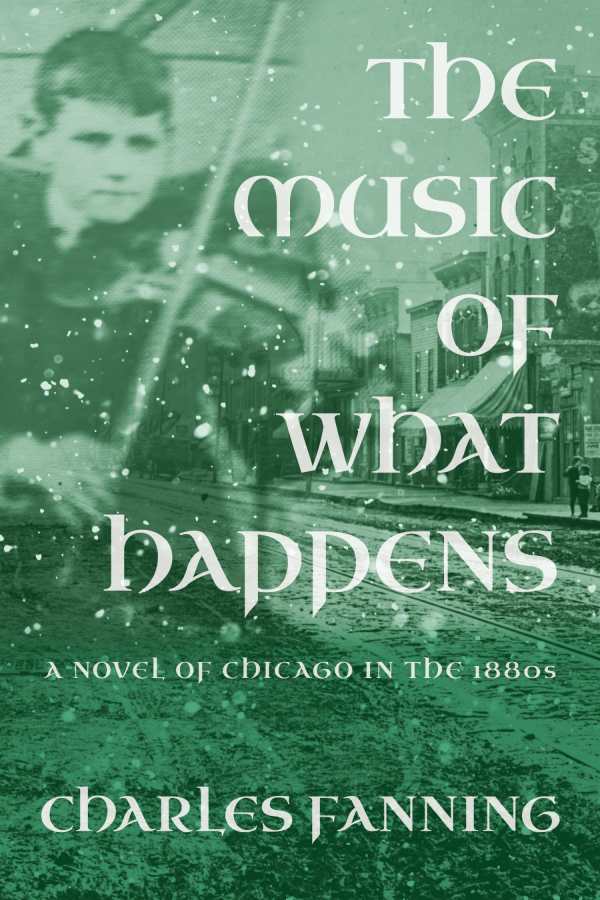The Music of What Happens
A Novel of Chicago in the 1880s
With its precise sense of place and myriad examples of everyday injustice, The Music of What Happens is a compelling historical novel.
Charles Fanning’s steady historical novel The Music of What Happens is about Irish immigrants and their neighbors in 1880s Chicago.
Jimmy’s parents left Ireland during the Great Famine. His uncle and godfather, James, is part of the Clan na Gael, an Irish nationalist group. Jimmy understands why the movement means so much to his uncle and plays the fiddle at its rallies, though others do not agree with the extreme actions that Clan na Gael takes in the name of freedom. When James dies in an attack, though, Jimmy decides the revolution is not for him.
Jimmy devotes time to teaching music to Irish immigrant youth and serves in the police department’s office, the turmoil of which does not seem to affect him much, even when Irish immigrants are the targets of violence. The community around him faces strife: his sister Mary labors every day; another sister, Margaret, loses friends. At work, Jimmy interacts with his employer’s daughter, Mary Ann.
A second plotline is devoted to Zephyr Davis, a Black man who has elliptic seizures brought about by stress. When he lands a job at Greene’s Boot-Heel Factory and is promoted to foreman, he takes pride in his job, only to be provoked and torn down by Maggie, one of Margaret’s friends. In a moment of heated tension that’s rare in the novel, Zephyr kills Maggie and tries to flee Chicago. When he’s caught, he admits to his crimes and pleads insanity due to his medical history; during his trial, he is subjected to the scrutiny and racism of the judge and jurors. Jimmy and Mary Ann wonder how they will move on from such a tragedy and begin to think about how the racism that Black Americans experience is similar to the situations their parents were in.
The prose is clear and precise when it comes to establishing settings, as when it notes that “four miles southwest of Chicago’s booming, burgeoning lake front city center, the Bridgeport neighborhood had the look and feel of a self-contained small town.” Gaelic words, phrases, and song lyrics are used to flesh out the Irish community and establish a sense of their pride in their heritage. But the story is impeded by its lengthy stretches of exposition, which often come in the course of conversations; people’s active participation in events is diminished in comparison. Indeed, pivotal plot points and emotional scenes often occur off page; they are recounted in monologues, sometimes from secondary perspectives.
Further, the perspective switches quite often, moving between Jimmy’s siblings as they recount myriad struggles and everyday victories. As a result, few members of the the broad cast (which includes not only Jimmy’s family, but also traveling musicians and politicians) are well fleshed out; the novel becomes crowded. Further, Jimmy’s positioning as the hero is overshadowed by Zephyr, whose internal wants and external conflicts are better attended to; they are tense, emotional, and compelling. In contrast, Jimmy is reduced to the role of a reactionary observer.
In the busy historical novel The Music of What Happens, injustice, racism, and class struggles lead to diminished opportunities for the vulnerable populations of nineteenth-century Chicago.
Reviewed by
Sterling Hooker
Disclosure: This article is not an endorsement, but a review. The publisher of this book provided free copies of the book and paid a small fee to have their book reviewed by a professional reviewer. Foreword Reviews and Clarion Reviews make no guarantee that the publisher will receive a positive review. Foreword Magazine, Inc. is disclosing this in accordance with the Federal Trade Commission’s 16 CFR, Part 255.

